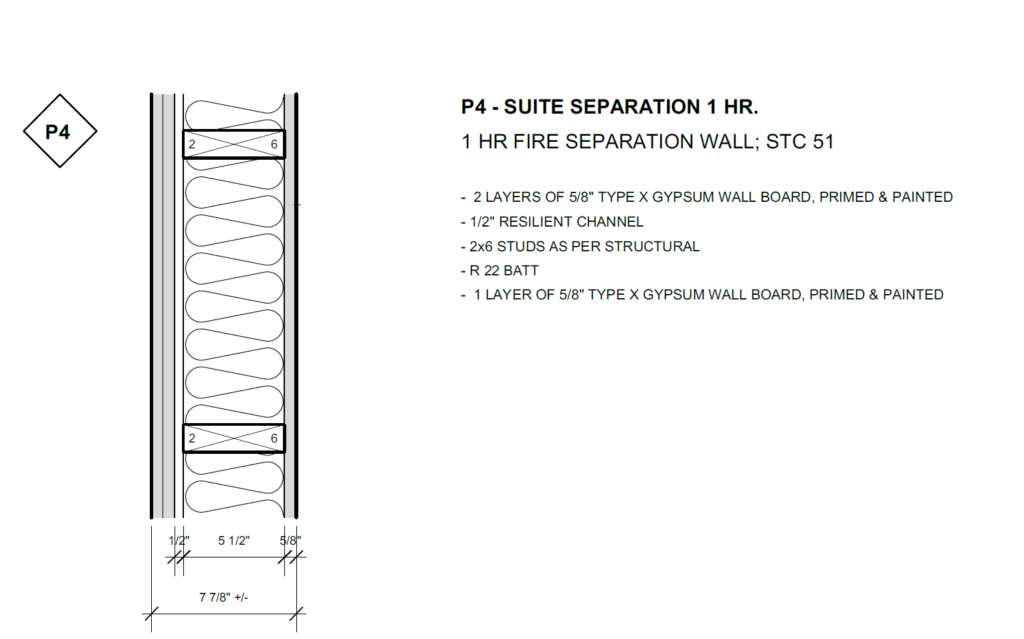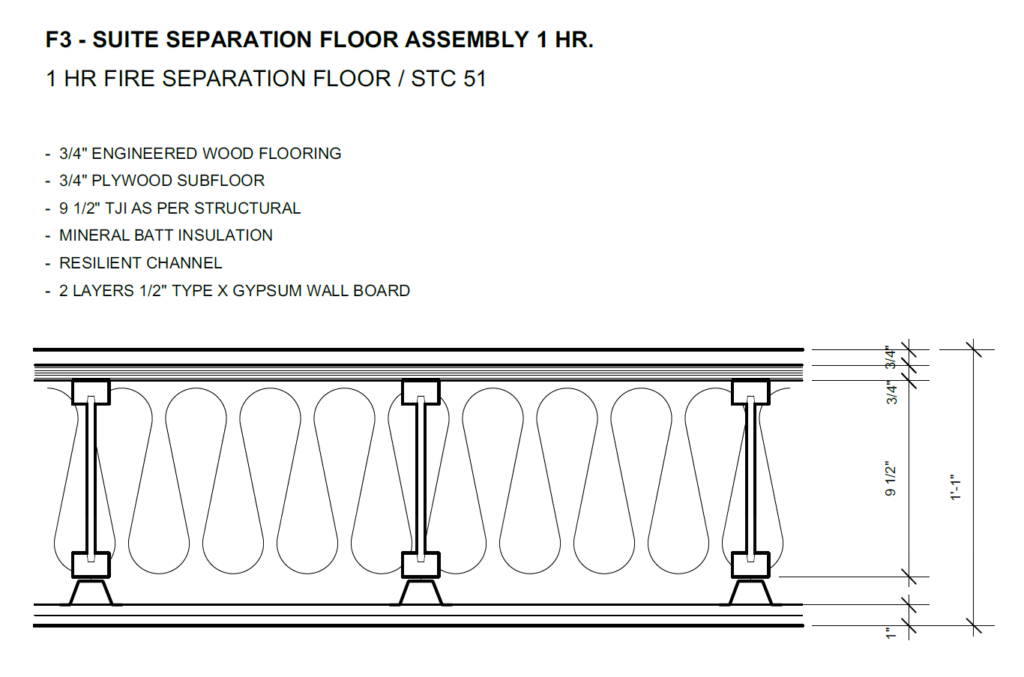One of our big concerns with the suite is noise. Sarah is a light sleeper so we don’t want a ton of noise coming up through the floor, and we have old wood floors built directly on the subfloor with none of the cushioning required in new builds to deaden the footfall noise going down. I also like a bit of volume on my Fatboy Slim so we want a decent amount of soundproofing for the comfort of ourselves and our tenants. I setup a ton of bookmarks and did a bunch of reading.
Types of Noise
There are two types of noise: Impact and Airborne
Impact is of course the footfall noise but also doors closing, things being dropped, furniture moving and i suppose a subwoofer sitting on the floor. Sound vibrations travel through the building material causing both sides to vibrate. In our old house built with old growth lumber, Ric in the basement could hear when Brianna dropped her lip balm (why does Eos make them round?!) upstairs. We want to reduce this for their benefit.
Airborne noise is people talking, music, or tv. The soundwaves in the air hit the building surfaces and are transmitted through, but to a lesser extent than impact noise. We want to lessen this for both our benefits.
Sound can travel directly or indirectly. It is sneaky and indirect noise is called flanking noise. Soundproofing is a battle.
https://www.soundproofingstore.co.uk/whats-the-difference-between-impact-and-airborne-noise
STC Ratings
Sound Transmission Class is a number rating used in the US for how well a barrier like a floor or wall assembly reduces airborne sounds. It very roughly reflects the decibel reduction in noise. Most of the rest of the world uses the ISO Sound Reduction Index (SRI) which is similar but way more mathy. Think of it as imperial vs. metric. As with both, the larger the number, the better the sound reduction.
| STC | What can be heard |
| 25 | Normal speech can be understood |
| 30 | Loud speech can be understood |
| 35 | Loud speech audible but not intelligible |
| 40 | Loud speech audible as a murmur |
| 45 | Loud speech heard but not audible |
| 50 | Loud sounds faintly heard |
| 60+ | Good soundproofing; most sounds do not disturb neighboring residents. |
https://en.wikipedia.org/wiki/Sound_transmission_class
Impact Insulation Class
Impact insulation class (IIC), is a number rating of how well a floor reduces impact sounds. Like the STC, a larger number means more reduction. The scale is logarithmic so a small increase in the IIC creates a very large decrease in impact sounds.
Soundproofing Techniques
All soundproofing relies on the same three techniques:
- Mass: Mass traps the soundwaves which is sort of like saying it absorbs them. If something is too heavy to vibrate, then it isn’t going to pass the sound through it.
- Absorption: By stopping the soundwaves from bouncing around you can reduce their impact.
- Decoupling: Disconnecting the structure stops the noise from travelling through. Most recording studios are built with a room within a room so that the walls of the rooms do not touch.
Soundproofing Walls
The wall between the suite and our stairs to the laundry room have to be fire proof so are already quite thick and the only thing not specified compared to the recommended structure is a product called Green Glue between the double drywall layers.

In the laundry room for the wall that joins to the kitchen we will actually have a fireproof wall and are going to be putting in a utility wall to run plumbing and wiring for the washing machine. I couldn’t find a rating for the exact assembly but it should be in the range of 73 STC. I am really happy with that because i am sure they don’t want to listen to us doing our laundry.
Green Glue is a “viscoelastic damping compound” (think fancy and fiercely expensive caulking) that adds absorption to the mass and the vendor claims up to a 12 STC improvement which is significant. With Green Glue the assembly is rated at 67 STC so without we could assume somewhere between 55 and 60 STC. They recommend 2 tubes ($60!!) per sheet of drywall so adding that in the two walls would be another $200. Not like i am looking to spend extra money, but it is the sort of thing that is impossible to add later so i think it is worth the investment. Of course to do it right, you need i also use acoustic sealant to stop the damn flanking noise and that is an additional cost.
Soundproofing Ceilings
This is a major concern and a challenge with putting a suite in an old house. As already mentioned, since we are keeping our floors, we will not be able to put down mass loaded vinyl or anything else to reduce our footfall noise upstairs. Again i found that the fire separation is pretty close to the recommended assembly and (with Green Glue) is rated at and STC of 66 and an IIC of 56. That is pretty good but i found another recommendation that boosts that to an STC of 76 and an IIC of 64. IIC is logarithmic so that is actually a whole bunch better.


We are doing a modified deluxe version and used a large portion of our salvaged drywall cut into strips and glued to the ceiling between the joists. We did leave some gaps but as this is mostly for IIC improvement, the gaps are not places where we are walking and i hope it isn’t too bad with the damn flanking noise. We also don’t plan on using the Green Glue between the 2 layers of drywall because the glue alone (let alone the time to use it AND the acoustic sealant for the cracks) would be a bit over $1600 and we need to watch our pennies.
See Week 40 and following for the ordeal of installing the drywall and Green Glue.)
Doing a great job, Rob.